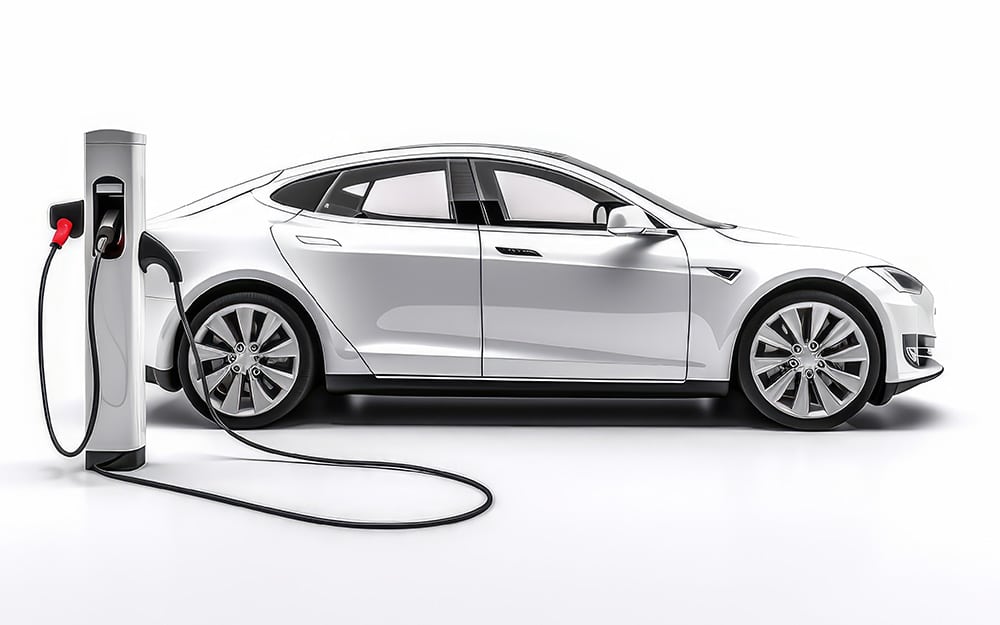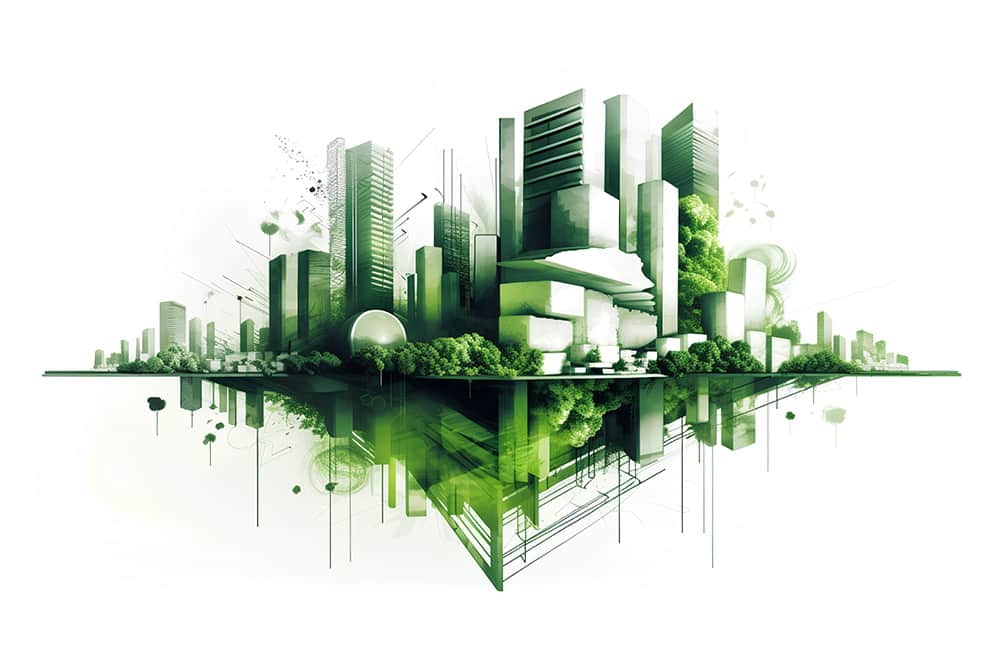
The Green Impact
Building Green
stock.adobe.com / TensorSpark
How LEED Certification is Driving the Future of Parking and Mobility
LEED (Leadership in Energy and Environmental Design) certification is a globally recognized designation for sustainability and efficiency in the built environment. Buildings that achieve LEED certification are designed and constructed using sustainable practices that reduce their environmental impact and promote human health and well-being. This can also include pre-existing buildings that seek certification during a renovation or expansion project. In both cases, parking and mobility features are key factors contributing to gaining LEED certification.
The LEED Program began in 1994 and has grown exponentially in the past decade. The U.S. Green Building Association, which administers this certification, stated that between January 2017 and December 2021, there were more than 36,835 projects that earned LEED certification, spanning nearly 4.63 billion gross square feet of space. In total, there are roughly 120,000 structures that carry the credential of having LEED certification.
What’s in it for me?
Buildings with LEED certification have proven to hold higher resale value over time. This is mainly due to the certified standard developers and contractors must achieve in creating a building that prioritizes sustainability and energy efficiency. Additional benefits can include:
- Lower energy costs.
- Tax credit opportunities.
- Lower carbon footprint.
- Expedited permitting for project construction.
- Low-interest loans.
How do I get Certified?
For each type of project, there are specific prerequisites that need to be met to qualify for the certification process. These include the location type, property boundaries of the prospective project, and build size. After meeting the prerequisites and beginning the design phase of the project, a LEED Green Rater as well as an Energy Rater will consult in the development and perform on-site verifications throughout the construction process.
The LEED review process works on a point system, which these verifying bodies will keep track of throughout construction. Points can be earned for various reasons, including sustainable material usage, energy efficiency, minimization of a building’s impact on the physical environment, and accessibility to services and transportation. LEED certification requires a minimum of 40 points beyond which higher levels can be achieved:
- Certified (40-49 points)
- Silver (50-59 points)
- Gold (60-79 points)
- Platinum (80+ points).
How Will Parking & Mobility Get Me Closer to Certification?
LEED certification can benefit everyone, from private businesses to government entities. In determining how parking and mobility can help aid in this process, utilize the online “LEED Credit Library” where one can search under the transportation category to learn how simple mobility features can get a project closer to certification.
E-Mobility Installation
Buildings incorporating E-mobility features such as electric vehicle supply equipment (EVSE) can earn a point under the “Alternative Transportation” category. Welliver Senior Project Manager and LEED expert Brad Kasiske notes that “As LEED rating systems continue to evolve to meet the current environmental concerns and technological capabilities, a stronger emphasis continues to be put on electric vehicle charging. The latest version available, LEED V4.1 beta, allows an extra point to be earned by one of two options: providing electric vehicle supply equipment (EVSE) for 5% of all parking spaces or providing the infrastructure to support 10% of all parking spaces.” By allotting designated spots for electric vehicles and installing level 2 (208/240A) stations with universal J1772 plugs you can meet the requirement. It is important to ensure that your stations meet Energy Star standards and can work within the building’s current energy capabilities. Technical aspects and other qualifications can be found on the LEED Credit Library. Overall, working to ensure access to EV chargers at an establishment can earn LEED points, amplify the mobility of its patrons, and increase the dwell time, thereby increasing location revenue and engagement.
Transportation Access
Transportation access, parking, and mobility management are all considered significant factors in LEED certification. Creating robust parking management systems that account for traffic flow and dwell time will give insights into patron needs and prevent parking inundation. Buildings implementing carpooling programs, preferred parking for hybrid and electric vehicles, or real-time parking availability information can earn points under the “Transportation” category. Siting buildings within a quarter mile of public transit—rail, bus, streetcar, etc.—can earn your project up to 5 points.
Sustainable Building Materials
Another way that parking and mobility features can contribute to a building’s LEED certification is through the creative use of sustainable materials and construction methods. For example, buildings with permeable pavement and green roofs can reduce stormwater runoff and improve water quality. These features can earn points under the “Water Efficiency” category. Adding solar-powered lighting fixtures or signage in parking facilities can earn points under the “Energy and Atmosphere” category.
Real-world examples of parking and mobility representation amongst LEED-certified buildings can be seen at airports, on university campuses, and sometimes even across entire cities that gain certification. One example to highlight is the parking garage at the Santa Monica Civic Center, one of the first examples of its kind, which was completed in 2008. This structure currently boasts a gold-level certification because of the sustainable features it hosts including recycled framing steel, photovoltaic panels to power the facility, and 14 designated EV charging spaces.
In summary, parking and mobility features can be critical in helping gain LEED certification. By reducing traffic congestion, promoting alternative modes of transportation, and using sustainable materials and construction methods, buildings with proper siting and green parking facilities can significantly contribute to the overall environmental impact of future property developments. ◆
Kate Kruk is Director of Community Engagement for Livingston Energy Group.
-
Kate Krukhttps://parking-mobility-magazine.org/author/kate-kruk/February 7, 2023


Seven-Generation Decision-Making
A major factor of sustainability is thinking about how we

Electric Vehicle Charging Operations Research
Preliminary Results







